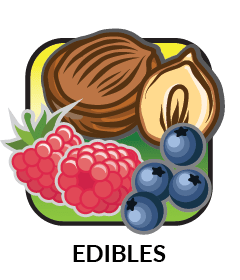Downy Serviceberry
Plant Type: Dormant, bare-root
Zones: 4-9
Soil Type: Light Clay, Loamy & Sandy Soils
Site Selection: Full Sun, Partial Sun
Mature Height & Width: 15-25' Height and 15-25' Spread
Growth Rate: Moderate - 12-24" per year once established
Moisture Requirements: Average to moist, well drained soils






Downy Serviceberry
Amelanchier arborea
This attractive Serviceberry will bring year-round interest to your yard. Early spring brings drooping clusters of 5-petaled, white flowers. Attractive to pollinators, the delicate blooms may last a week or more, if not blown away by the wind. Oblong fine-toothed leaves of bronze-purple emerge after the bloom. Edible dark purplish-black berries resemble blueberries in color, size, and taste. The 3” long leaves turn to dark green in summer. You’ll love the brilliant autumn show of red orange. This attractive shrub is also classified as a small tree.
The berries produced by the Amalanchier are a favorite of bakers for jam, pies and cobblers. Mature fruit is generally ready for harvest 45 to 60 days after the very early bloom; and typically ripen in late June or early July. Berry crops will generally be available to harvest within 3 to 5 years of planting and will produce an average of 4 to 6 lbs. of berries each season.
Amelanchier arborea is known as Shadbush.
This Amelanchier is loved by bees and other pollinators. Small birds can easily pick the shrub clean of berries, even before fully ripened! It is moderately deer resistant. All parts of the Downy Serviceberry are non-toxic. No serious insect or disease problems. Occasional problems may be rust, leaf spot, fire blight, powdery mildew. Berries are delicious fresh from the tree or used in cooking, baking and preserving.
Common uses for the Serviceberry include:
- Found along borders of woodlands, streambanks and fence rows
- Edible berries are rich in nutrients and antioxidants
- Attracts many types of birds and wildlife
- Pleasant orange, yellow and deep red fall color
- Can be used for a privacy screen
- Ornamental and specimen plant
- Planted near patios and decks
- Great low to mid level section of a windbreak
- Planting around Black Walnut or Butternut, as Serviceberry are juglone toxicity resistant
The shrubby growth of the Downy Serviceberry makes a great cover and nesting habitat for songbirds. Bears enjoy the fruit as do flocks of Cedar Waxwings which will gorge themselves on the berries in springtime. While the fruit produced is a favorite for Baltimore Orioles, Brown Thrashers, Catbirds and Rose Breasted Grosbeaks, the berries have been documented to be eaten by at least 35 species of birds. Twenty-three types of animals also feed on the Serviceberry. Chipmunks, squirrels, beaver, bears, mule and white-tailed deer, moose and elk are among those animals.





